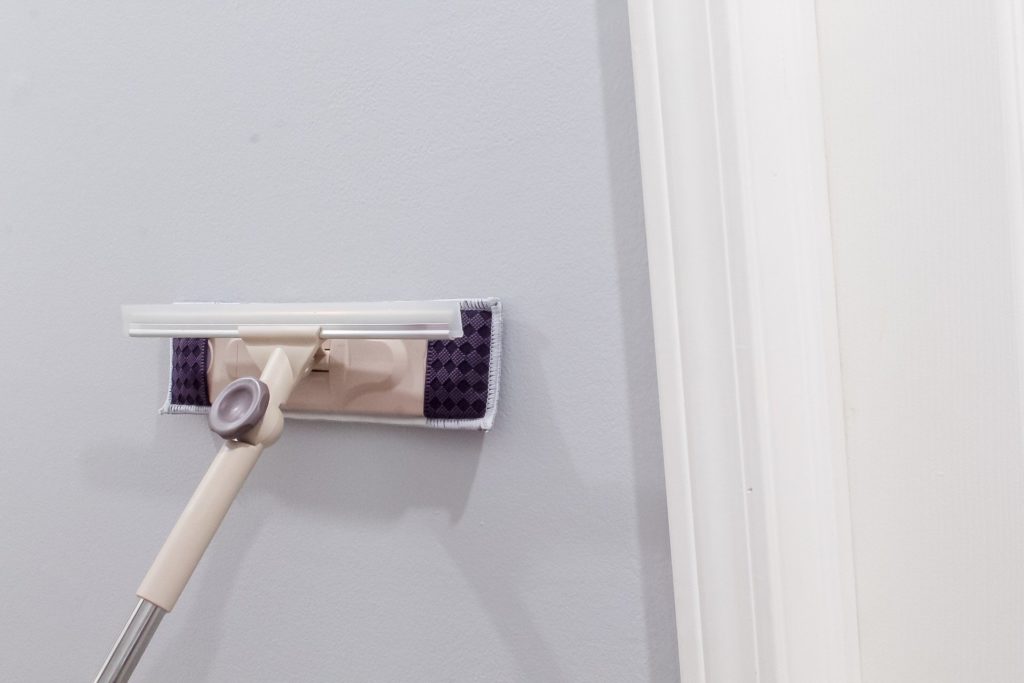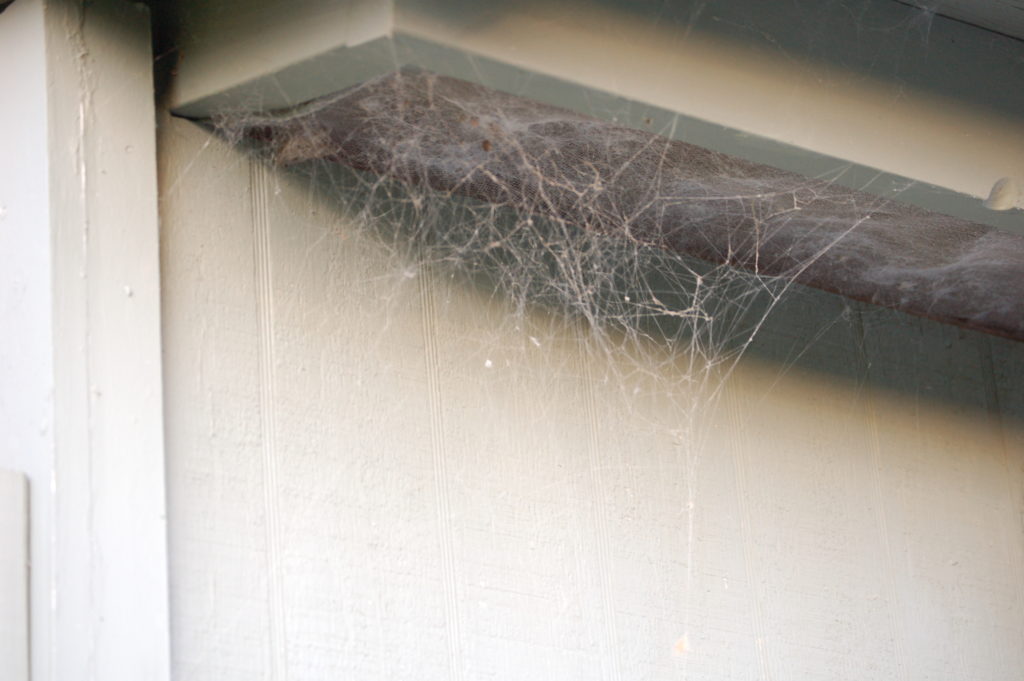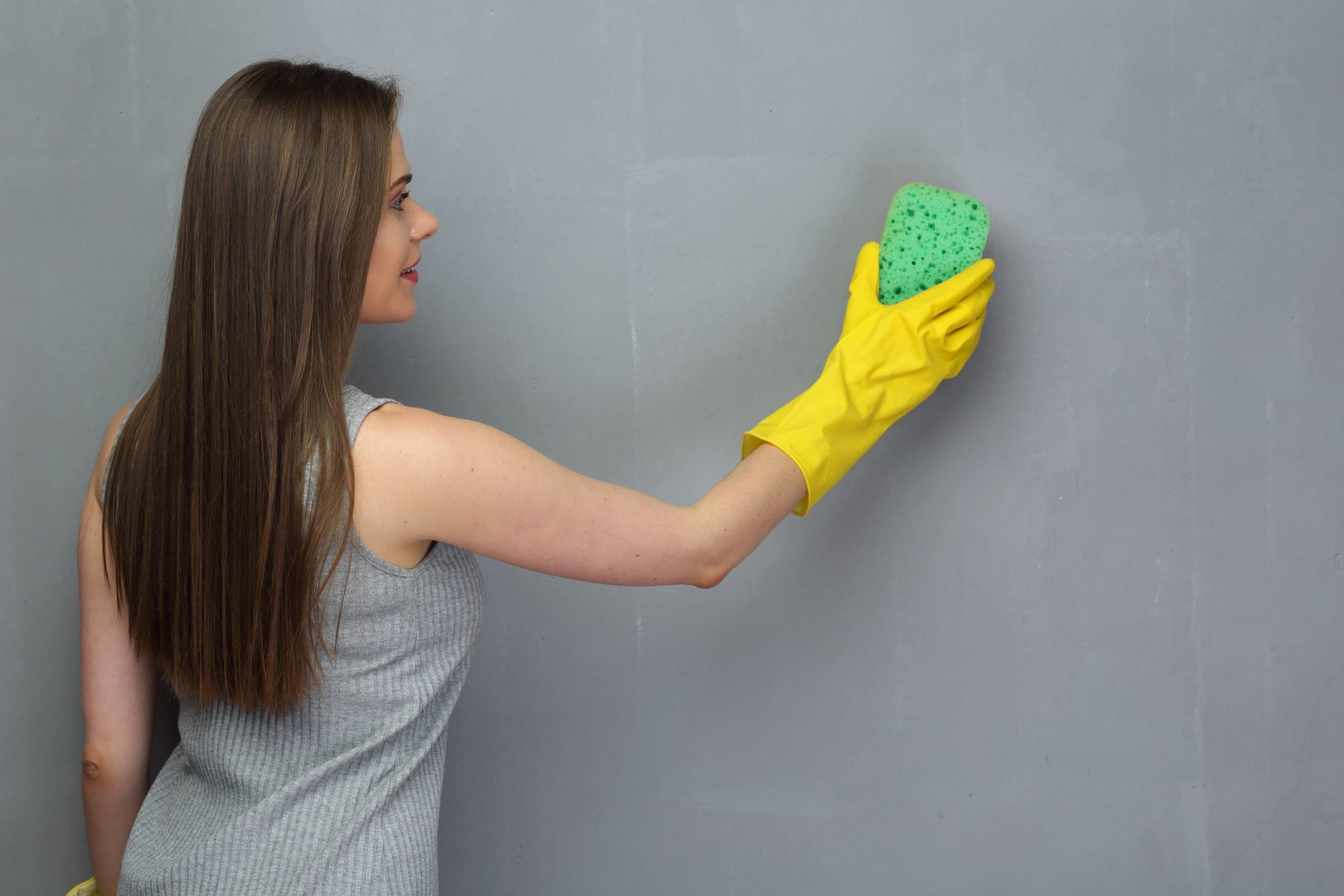Why you should clean painted walls
Walls in need of a wipe down aren’t typically very obvious. That is of course unless they are white or light-colored and splatted with chocolate, crayons, and dirt from kiddos and pets. It’s unlikely that the next friend or visitor in your home will even notice if you have not cleaned them in the 5 years you’ve lived in the home.
That being said, a wall washing schedule should be considered.

When to clean walls
Since this task literally is no fun at all, you’ll want to determine when you should clean your walls. This analysis should help you determine what results you would like from a wall cleaning regiment. Consider your family allergies, the foot-traffic around certain walls, and when they were last cleaned. It’s recommended by many that walls are cleaned at least once a year, ideally in early spring or late fall.
Personally, I like to do this task in late spring/early summer. Why? Because depending on where you live and how much your windows are open in the spring, I believe it is beneficial to wash off the dust and pollen that spring can bring in through the windows. You’ll be knocking down two issues at once on this general timeline.
Inbetween deep cleaning, you can supplement with weekly dry dusting, spot cleaning, and vacuuming up pesky cobwebs that may appear. It’s also a good idea to clean your walls before repainting a room. This will help the fresh paint and primer adhere to the wall and give you a seamless look.
Tips and To-do’s
Honestly, how often you clean walls and corners will depend on how dirty your house gets. As mentioned above, indoor and outdoor weather conditions contribute to your cleaning schedule; homes with open windows are subject to those spring and fall pollens and require at least weekly cleaning for allergy sufferers. Children and pets contribute to the dirt that builds up in corners and the smudgy fingerprints found on walls around light switches and near windows.
So what are the best practices to keep your walls clean?
Determine your paint
Before you do anything, you’ll want to determine what type of paint you have on your walls. For walls with gloss or semi-gloss paint, you’ll be able to use a wet solution to thoroughly wash your walls. Eggshell or flat finish walls will need to be dry dusted, so as not to ruin the paint.
Vacuum and dust first
Spiders enjoy building webs in the corners between walls and ceilings; use a long-handled broom or a rounded plastic brush on a telescoping arm to reach in the horizontal corners between ceilings and walls and the vertical corners where two walls meet. Remove debris and dusty cobwebs with the brush, or wipe them down with a soft dry mop.

You’ll want to pay special attention to molding, chair rails, and trim. The brush and wand attachment on your vacuum make removing cobwebs a breeze. We always encourage pulling out your stepladder to be safe if you can’t reach high enough to remove the loose dust or debris. You should complete wall and corner dusting at least on a monthly basis.
Wash Kitchen & Bathroom Walls
Remove the residues of cooking and steamy showers by washing the painted areas of kitchen and bathroom walls at least once every year. Start from the bottom. Rub gently with a natural sponge and a soap and water solution. Wash and rinse a small area, then move up and do an area that partially overlaps what you’ve already cleaned. Dry the wall with an old towel. Don’t forget to wash woodwork as well.
In the case of all rooms, if they are regularly used by children or a smoker in the family, or have a fireplace or wood-burning stove, you’ll want to focus on these rooms twice a year. You would be surprised how quickly they can change in appearance. Ignoring them long-term can really accumulate damage and be difficult to clean, making this simple chore a real pain.
Test painted walls
It’s safe to wash glossy and semigloss paint, which are commonly used in kitchens and baths and on woodwork. Most modern flat and satin paint are also washable, but always test them in an inconspicuous spot. If paint chalks off on your sponge, don’t wash that paint. Never wash with trisodium phosphate (TSP) except when you are about to repaint; it dulls the finish. If you see color coming off anywhere, then stop washing and move to a less invasive cleaning technique like dusting.
Make you own wall-washing soap
Homemade soap mixtures do a great job cleaning painted walls. Both of these mixtures are inexpensive, simple to make, and at least as good as commercially available cleaners. Why spend money on chemical solutions when you can safely make your own home remedy?
- Mix 1 cup of borax and 2 tablespoons of dishwashing liquid in 1 gallon of warm water. You’ll find borax in the cleaning-products aisle at the supermarket.
- Mix 1 cup of ammonia and 1 teaspoon of dishwashing liquid in 1 gallon of water.
Touch up damage
To keep the paint looking fresh, touch up damage as it occurs. Sand and touch up a scraped or chipped surface, feathering the paint over the surrounding area. Fill holes in the wall first. Coat a recalcitrant stain with stain sealer before touching it up. If a leak has caused peeling and bubbling, fix the leak source; then scrape and sand the area and repaint it. Whenever possible, use paint leftover from the original job.
Match your paint color
There are scenarios where, for example, a leak damages the paint in the corner of the ceiling and a bit of the wall under it and you don’t have original paint left over. You might be overwhelmed thinking the entire room needs to be repainted. Luckily that is not the case.
Cut through a small section of the painted area with a razor blade or utility knife to pull a good size chip from the area. Take the chip to a paint store that has computerized paint-matching equipment. They generate a recipe that the store can use to match the color. Computerized color matching is usually free and it may save you from having to repaint the entire room for a few years.
Final thoughts…
You might be tempted to do the entire house at once, but it’s better if you sort this hefty project by floor or room. It is a long, tedious process that shouldn’t be rushed. Take two weekends to tackle different walls in each area of your home.
Your walls are a big part of your home, so they should be given attention just like the rest. Schedule out time when you can deep clean and don’t forget to work wall cleaning into your regular maintenance routine. If you don’t have time for this or don’t care to do it, you may want to hire a professional to clean walls for you.
P.S. Don’t forget the ceilings!

